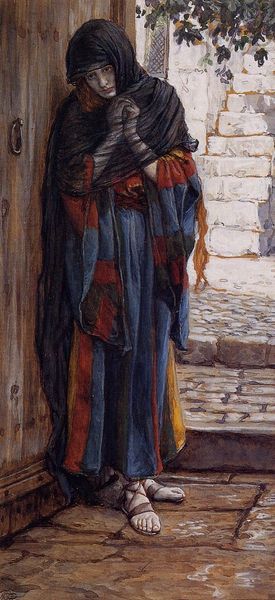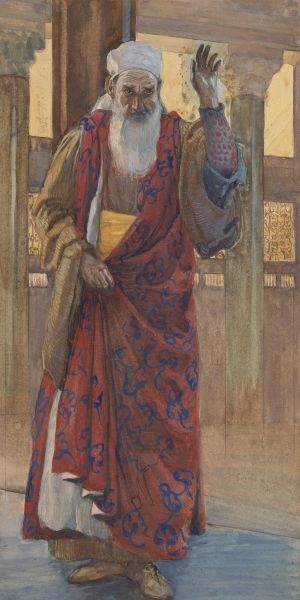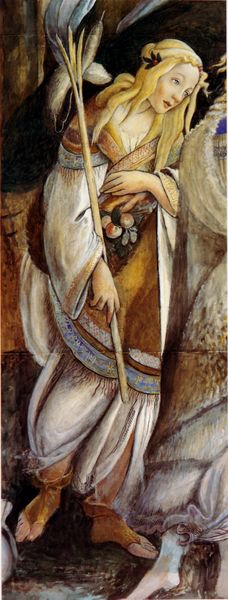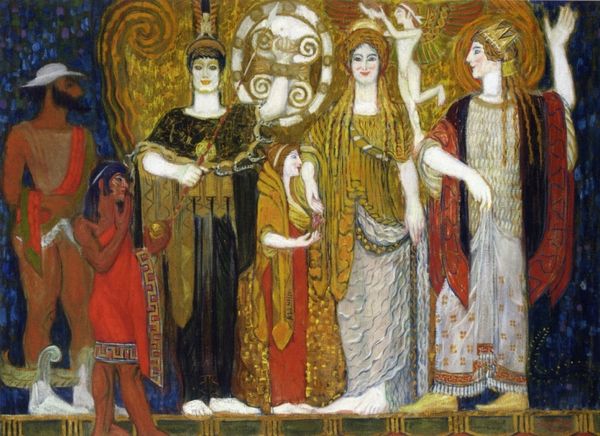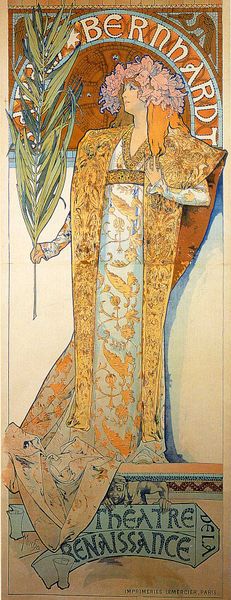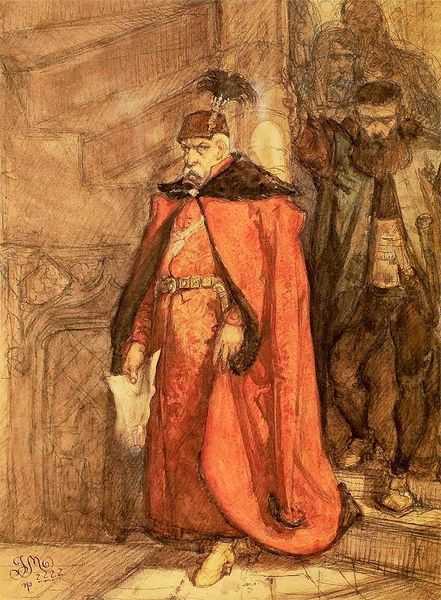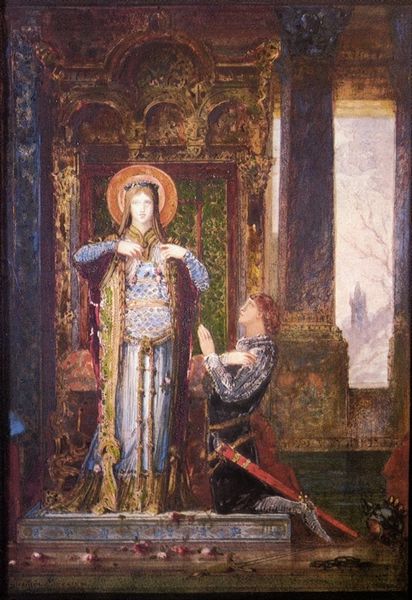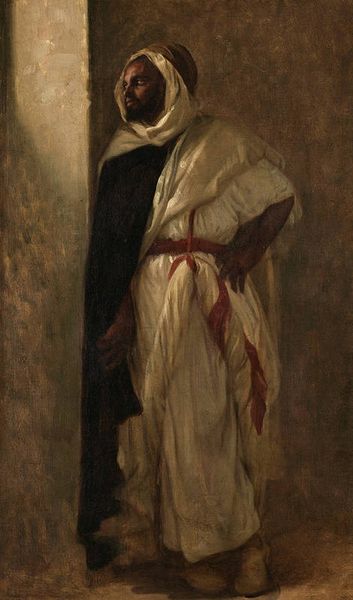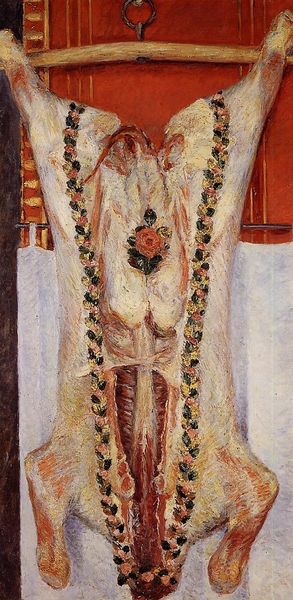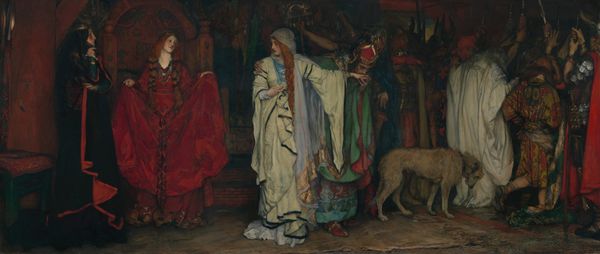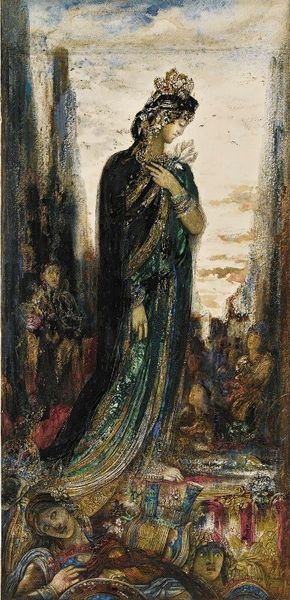
painting, watercolor
#
portrait
#
narrative-art
#
painting
#
figuration
#
oil painting
#
watercolor
#
symbolism
#
history-painting
#
academic-art
Copyright: Public domain
James Tissot painted Mary Magdalene before her Conversion with watercolor, a medium often associated with sketching and preparatory studies, and thought of as “lesser” than oil paint. However, Tissot embraces watercolor’s inherent qualities, its luminosity, and fluidity. The thin washes of pigment allow light to penetrate and reflect off the paper, creating a vibrant, almost ethereal effect. Look closely at the textiles of Mary Magdalene’s garment. The way the colors blend and bleed into one another mimics the way dyes saturate fabric. The artist was trained in the academic tradition, but in this work, the medium itself seems to take on a life of its own, pushing back against any rigid definition of fine art. The attention to detail in the rendering of the jewelry is remarkable, each tiny bead and gemstone rendered with meticulous care. The contrast between the opulence of Mary Magdalene’s attire and the humbleness of the watercolor medium creates a compelling tension. It reminds us that the value of art lies not only in the subject matter but also in the materials and processes used to create it.
Comments
No comments
Be the first to comment and join the conversation on the ultimate creative platform.
